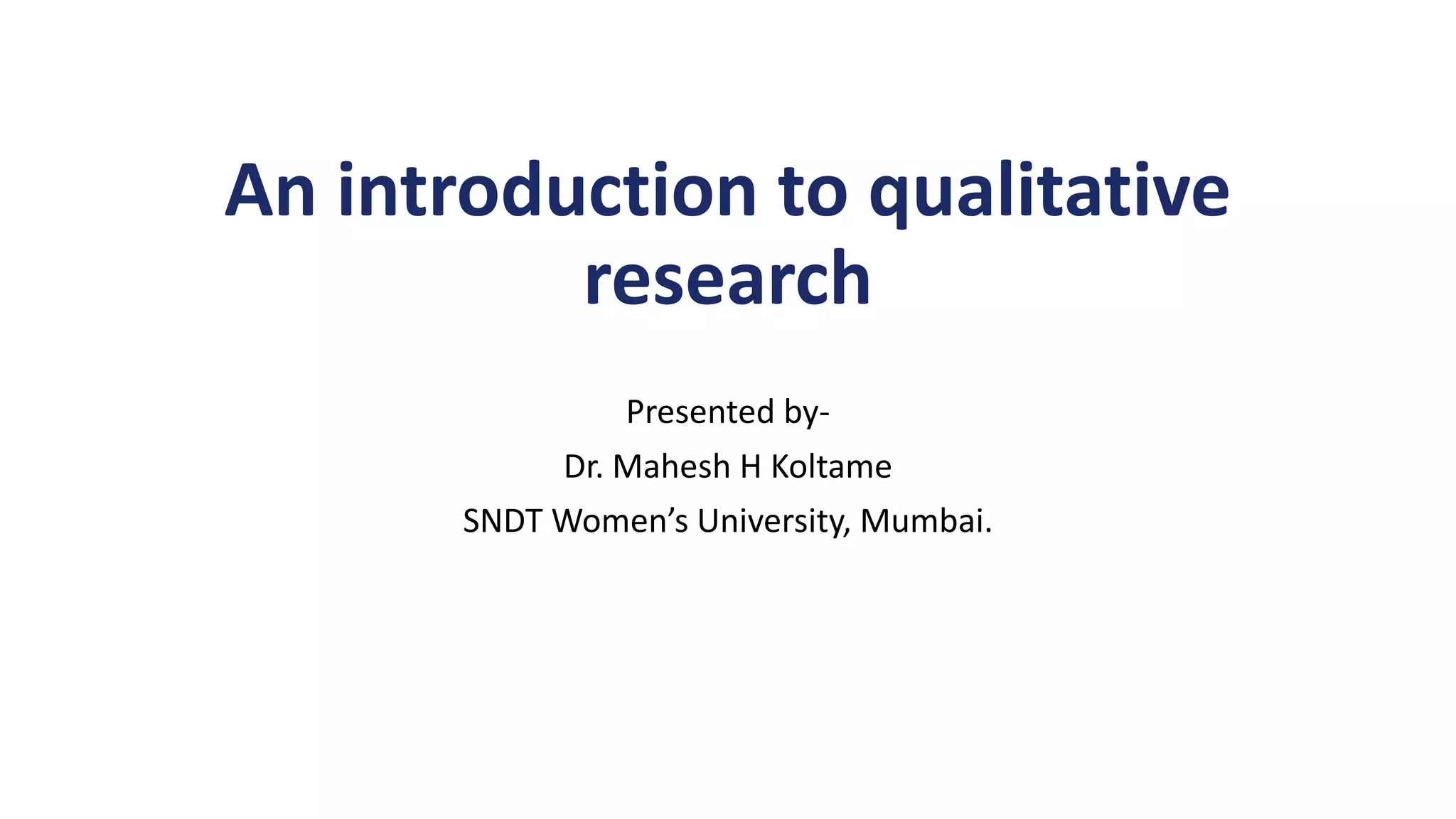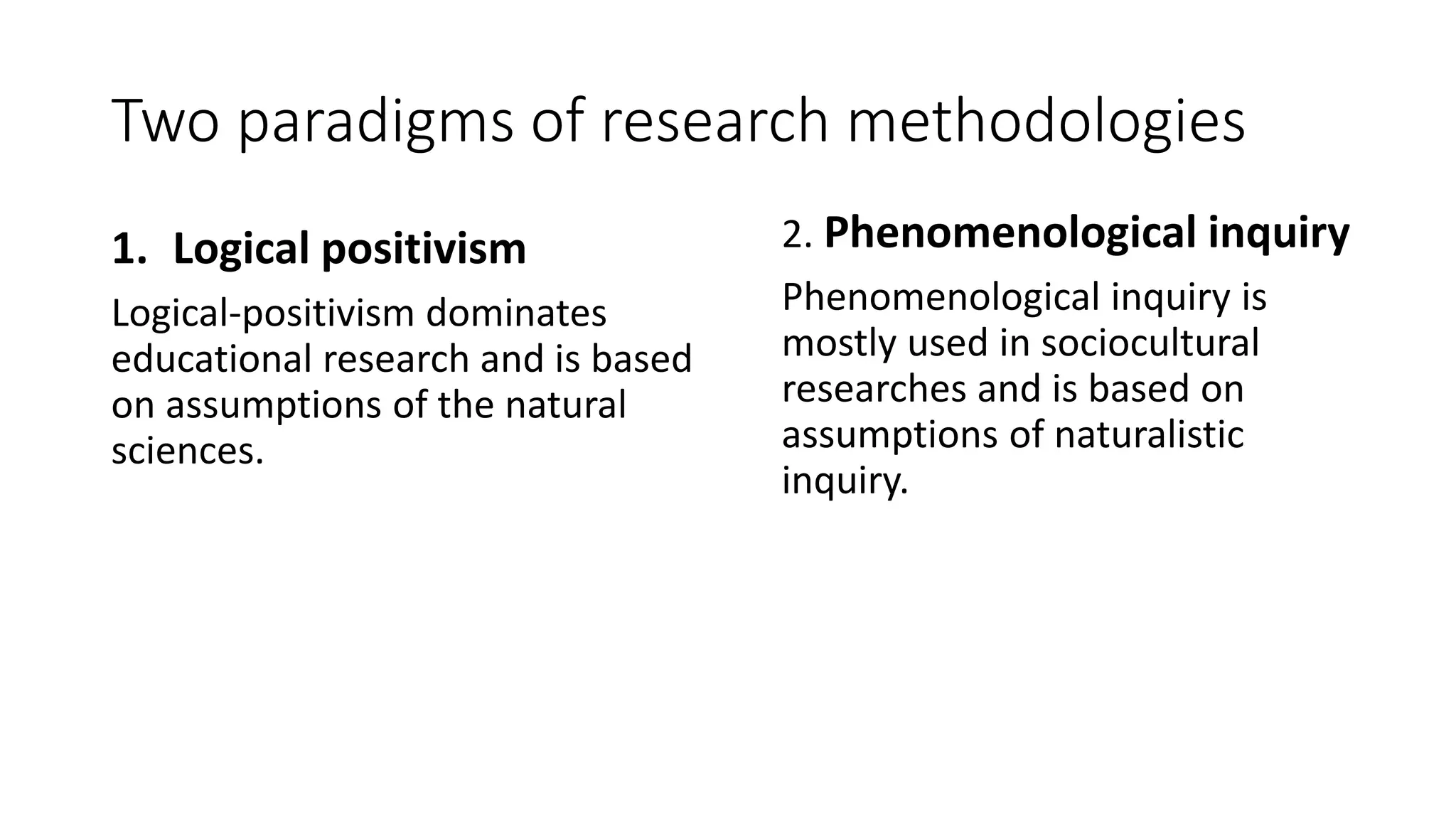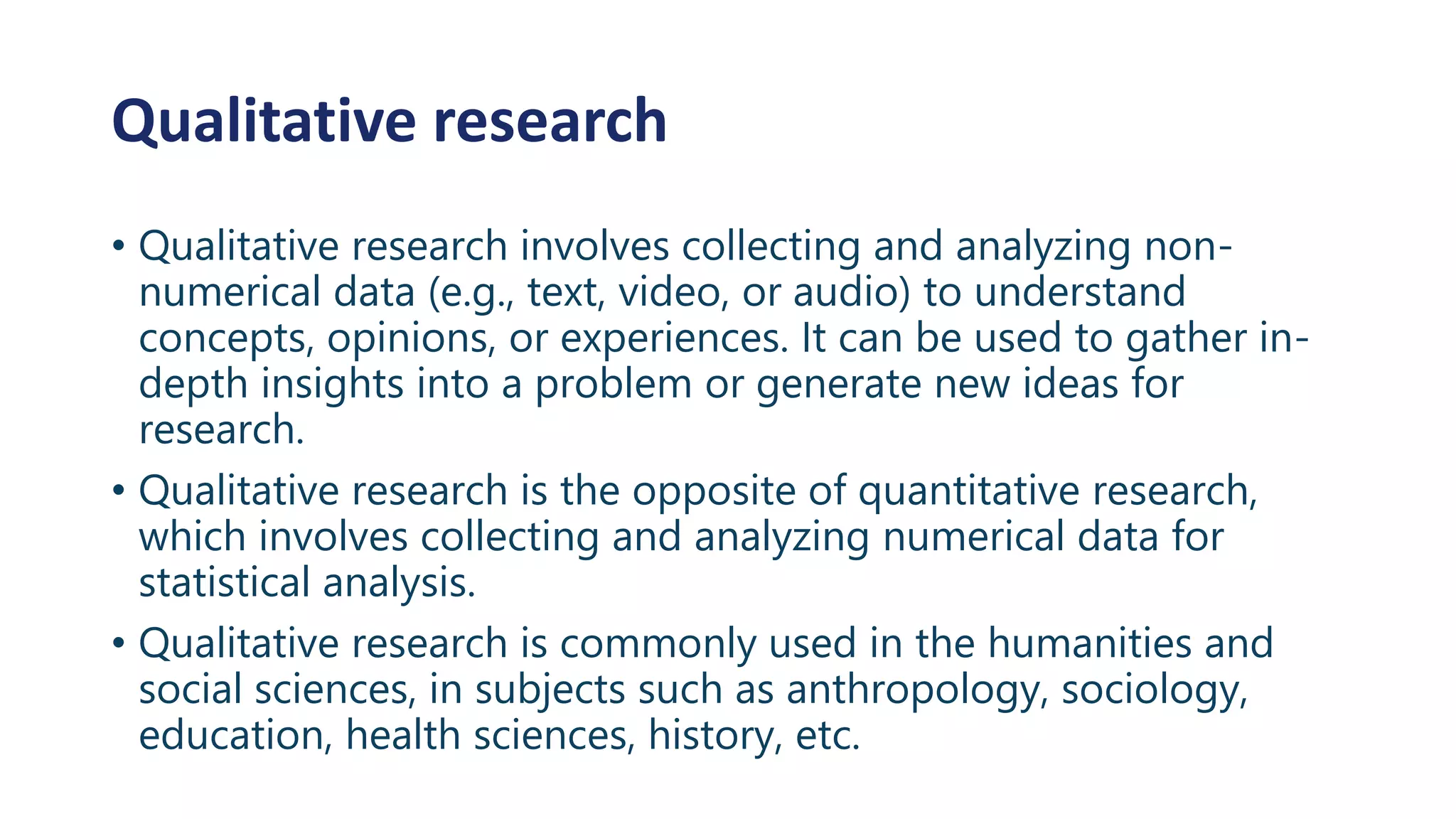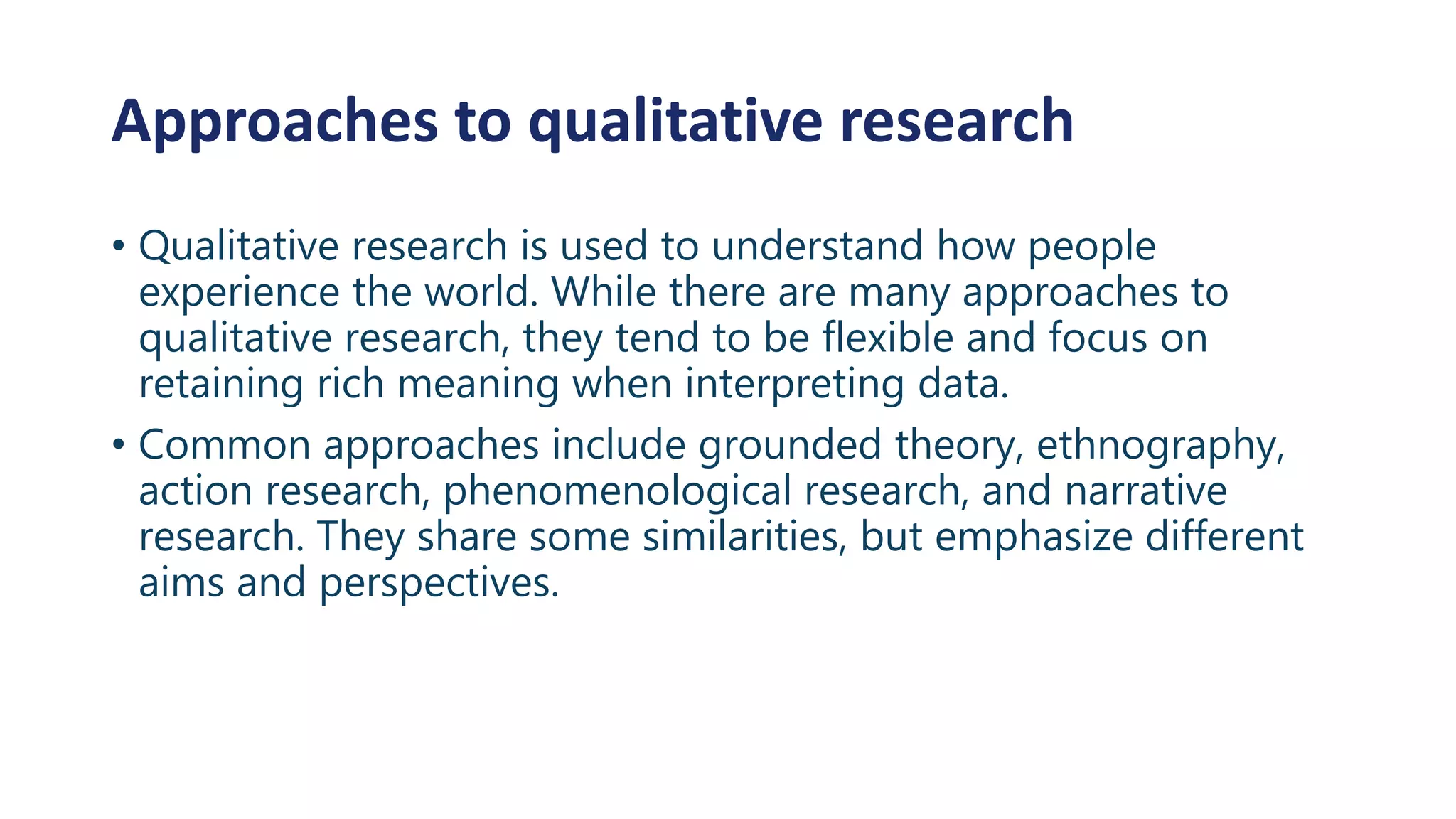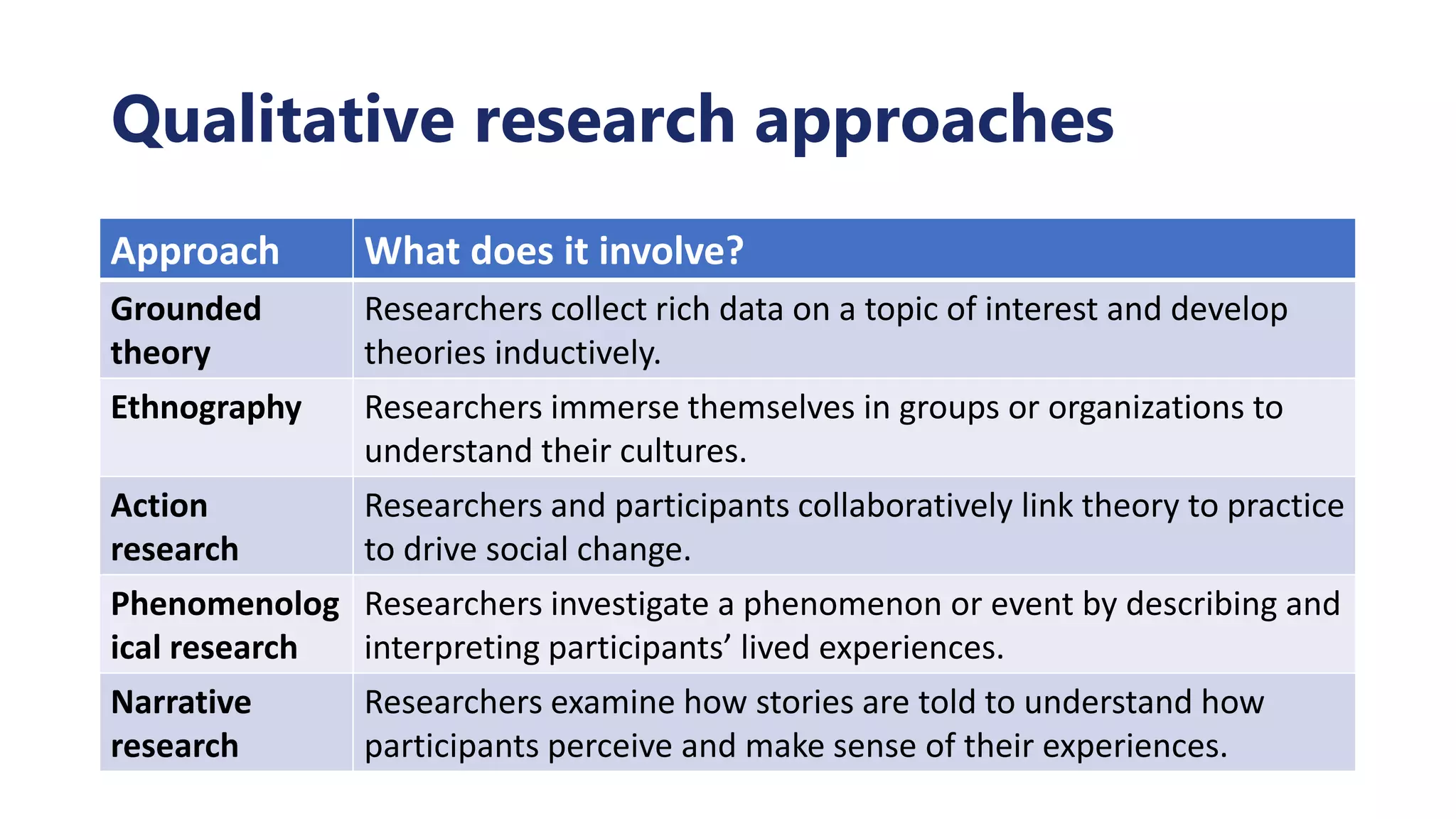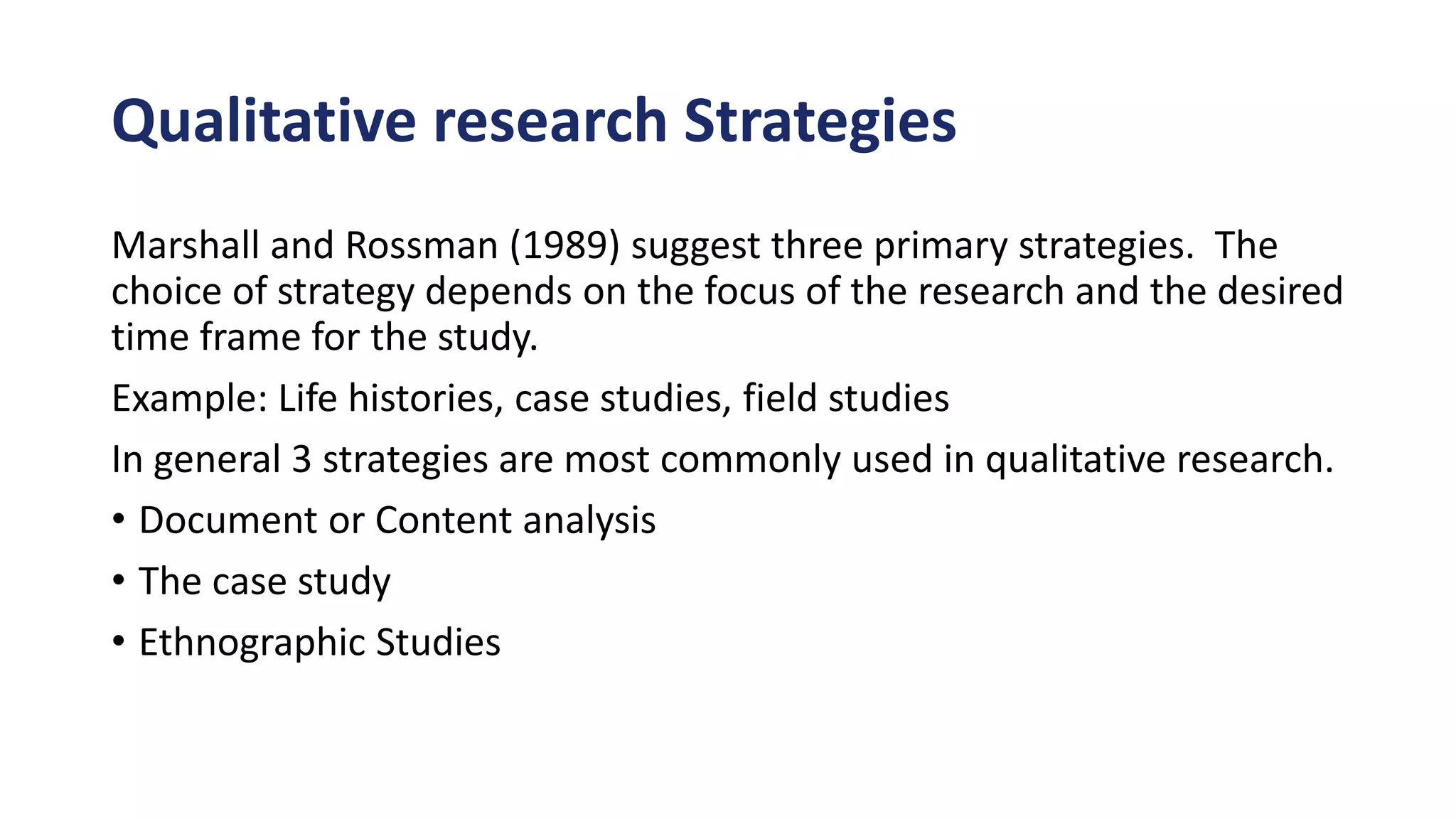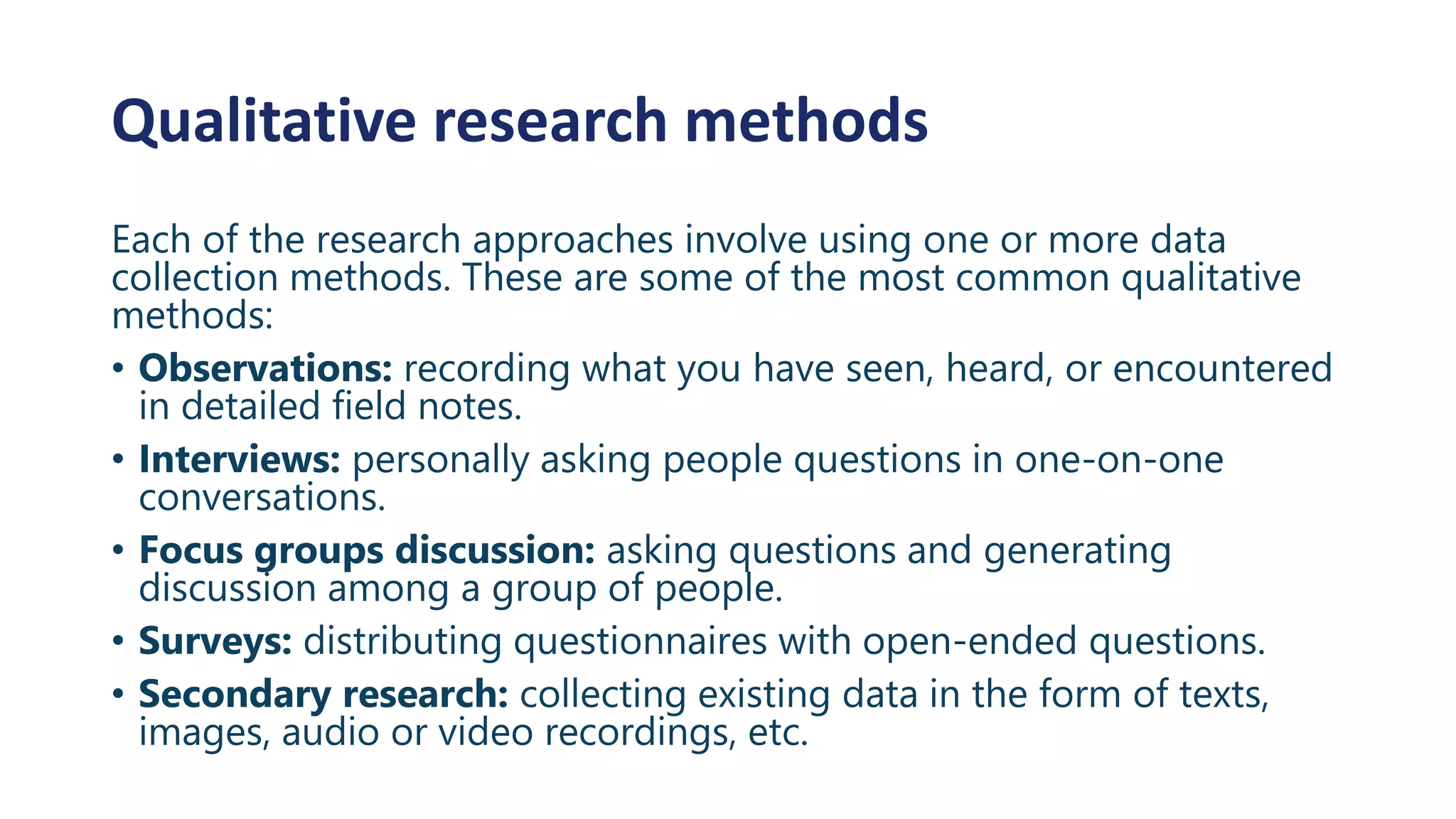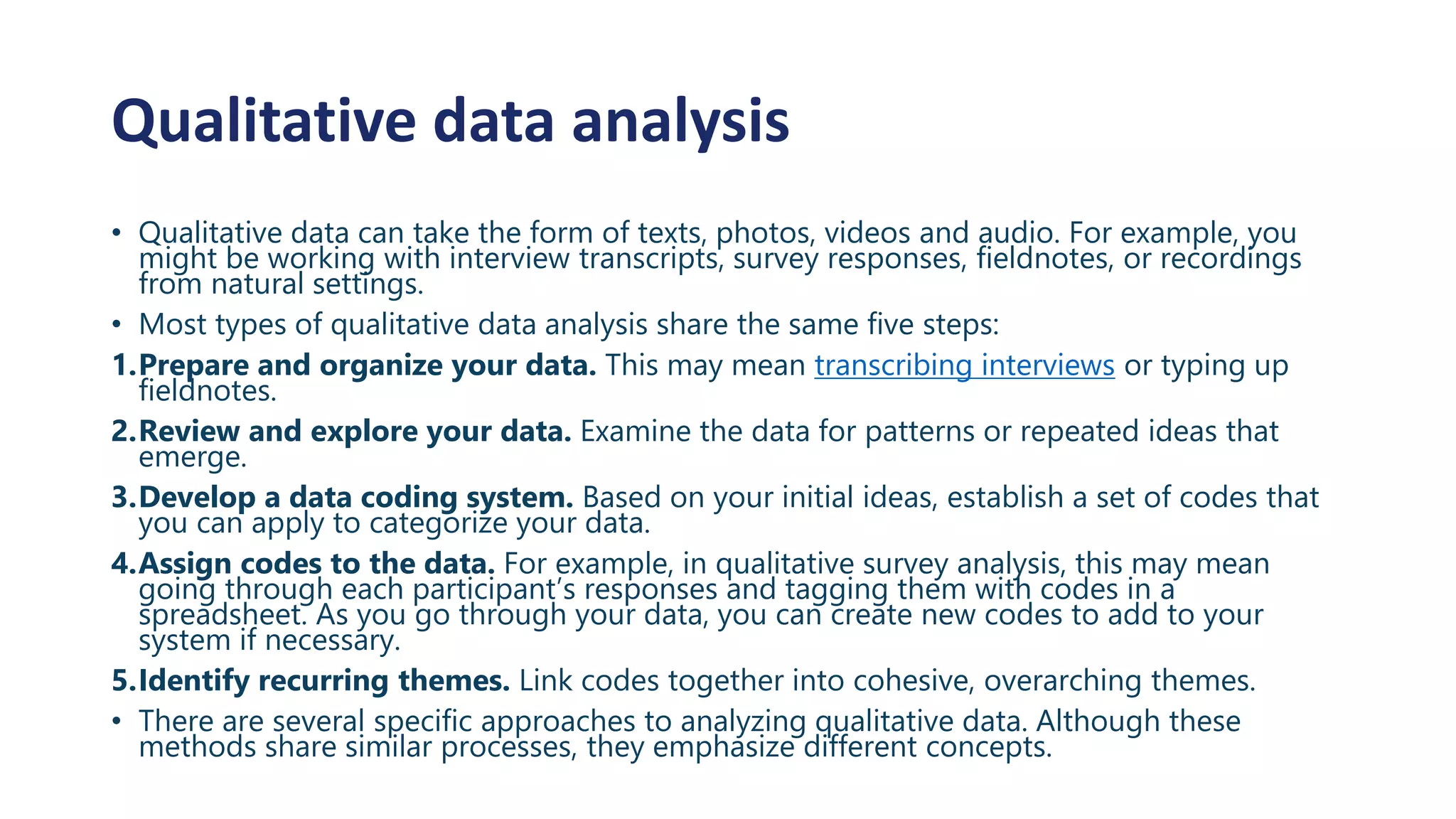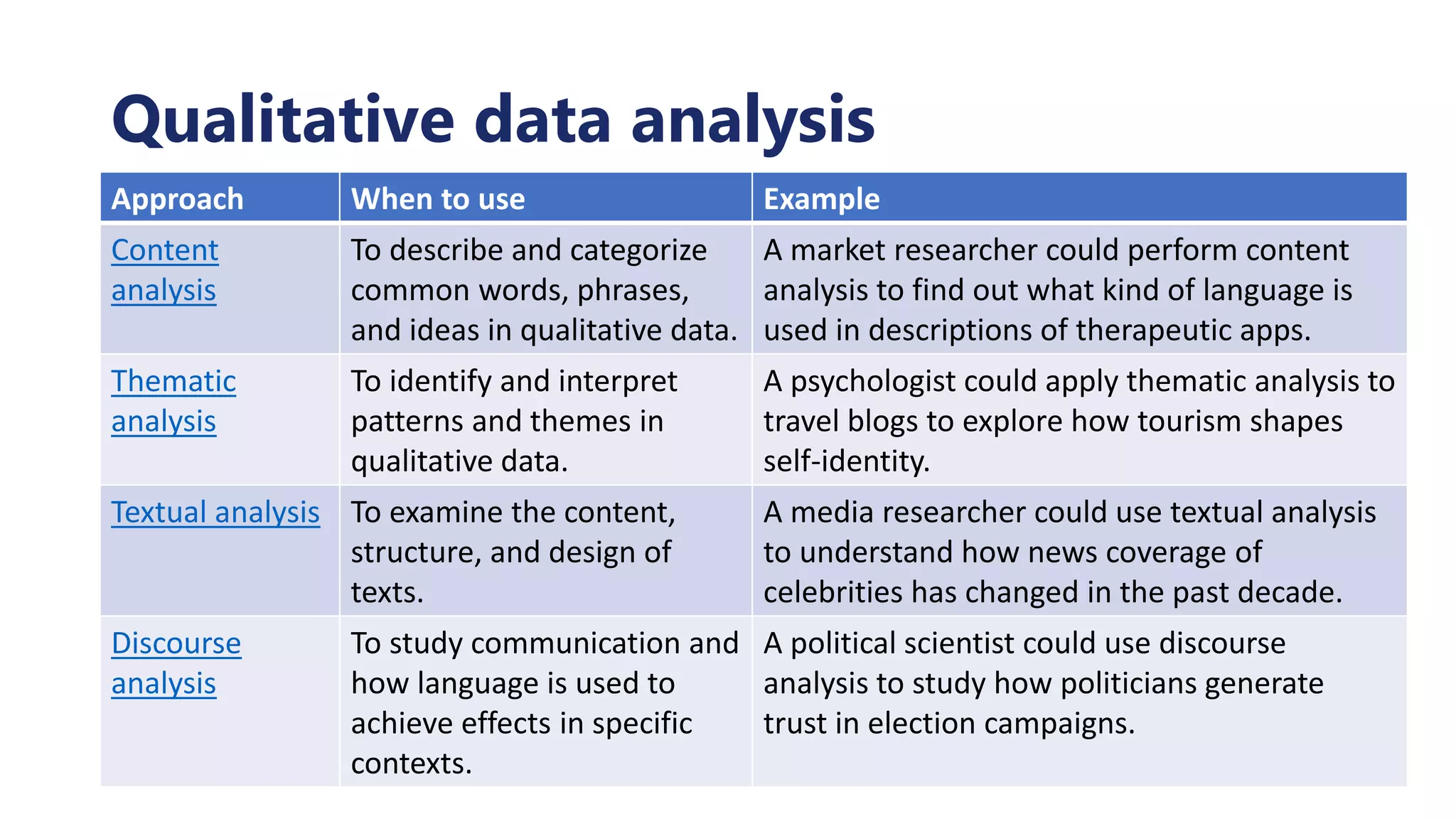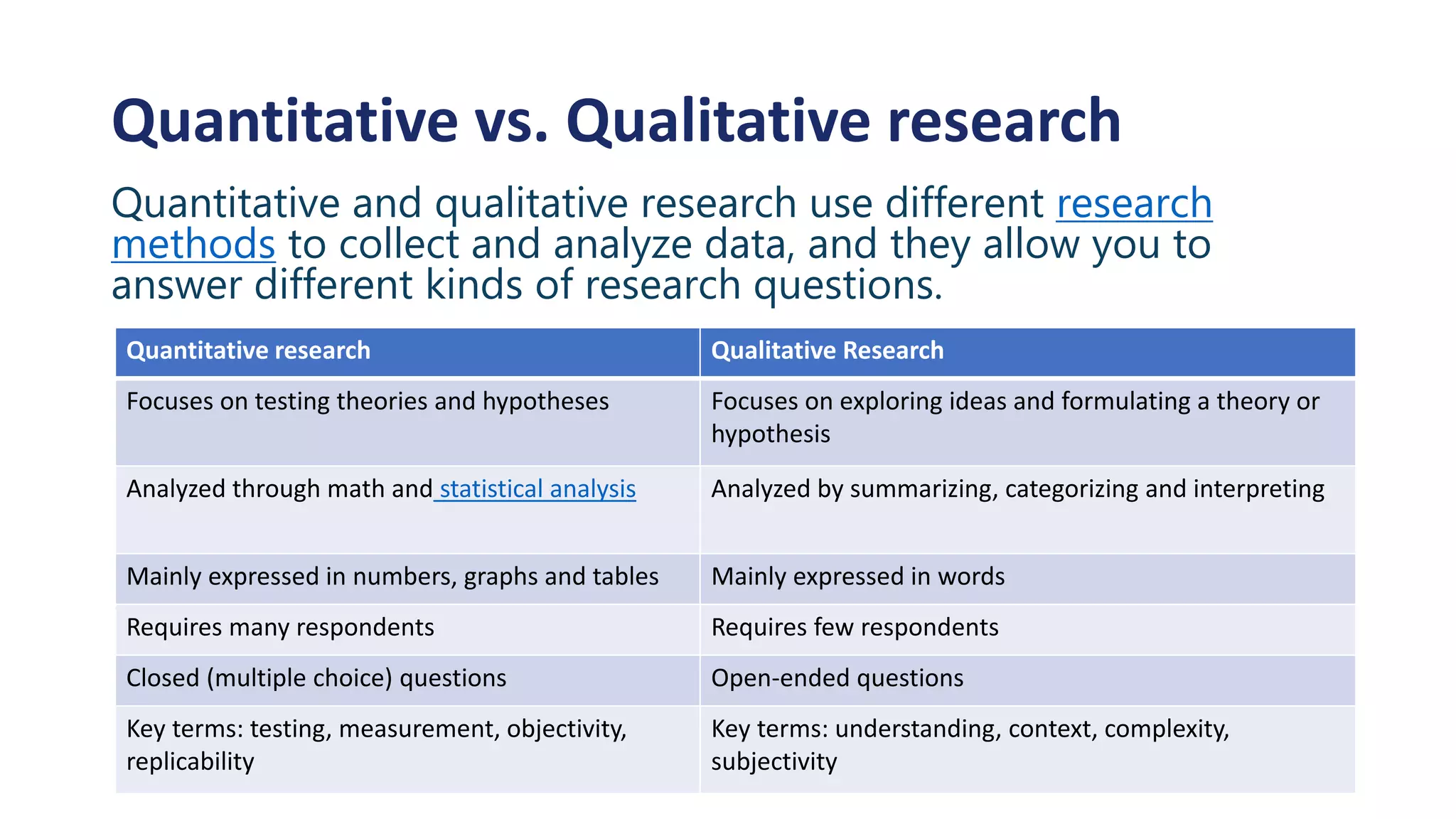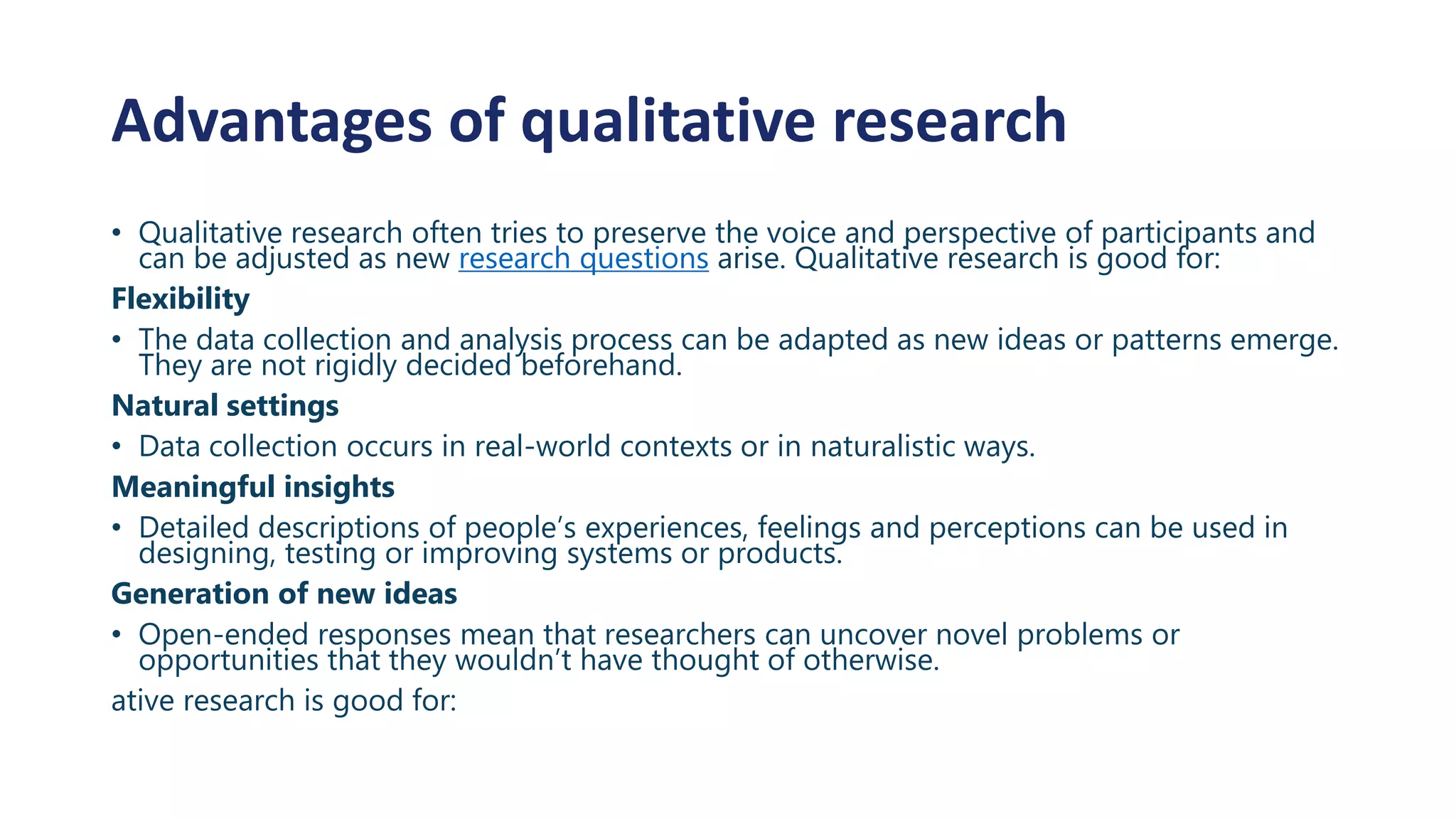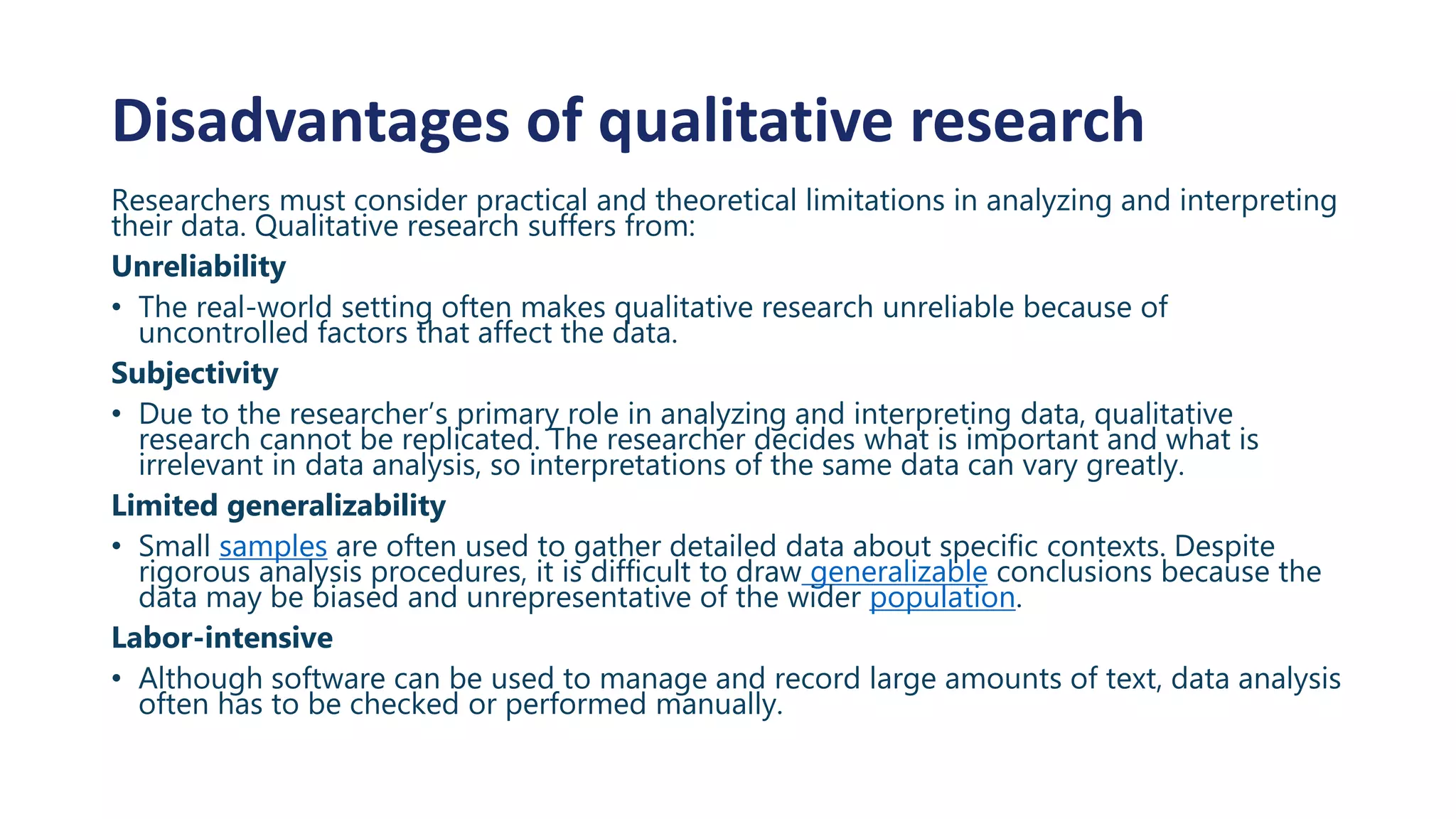This document provides an introduction to qualitative research. It discusses two paradigms of research methodologies - logical positivism and phenomenological inquiry. Qualitative research involves collecting and analyzing non-numerical data to understand concepts, opinions, or experiences. Common qualitative research approaches include grounded theory, ethnography, action research, phenomenological research, and narrative research. Data collection methods may include observations, interviews, focus groups, surveys, and secondary research. Analysis involves preparing, exploring, coding, and identifying themes in the data. Qualitative research has advantages like flexibility, studying natural settings, and generating meaningful insights, but also disadvantages such as unreliability, subjectivity, and limited generalizability.
